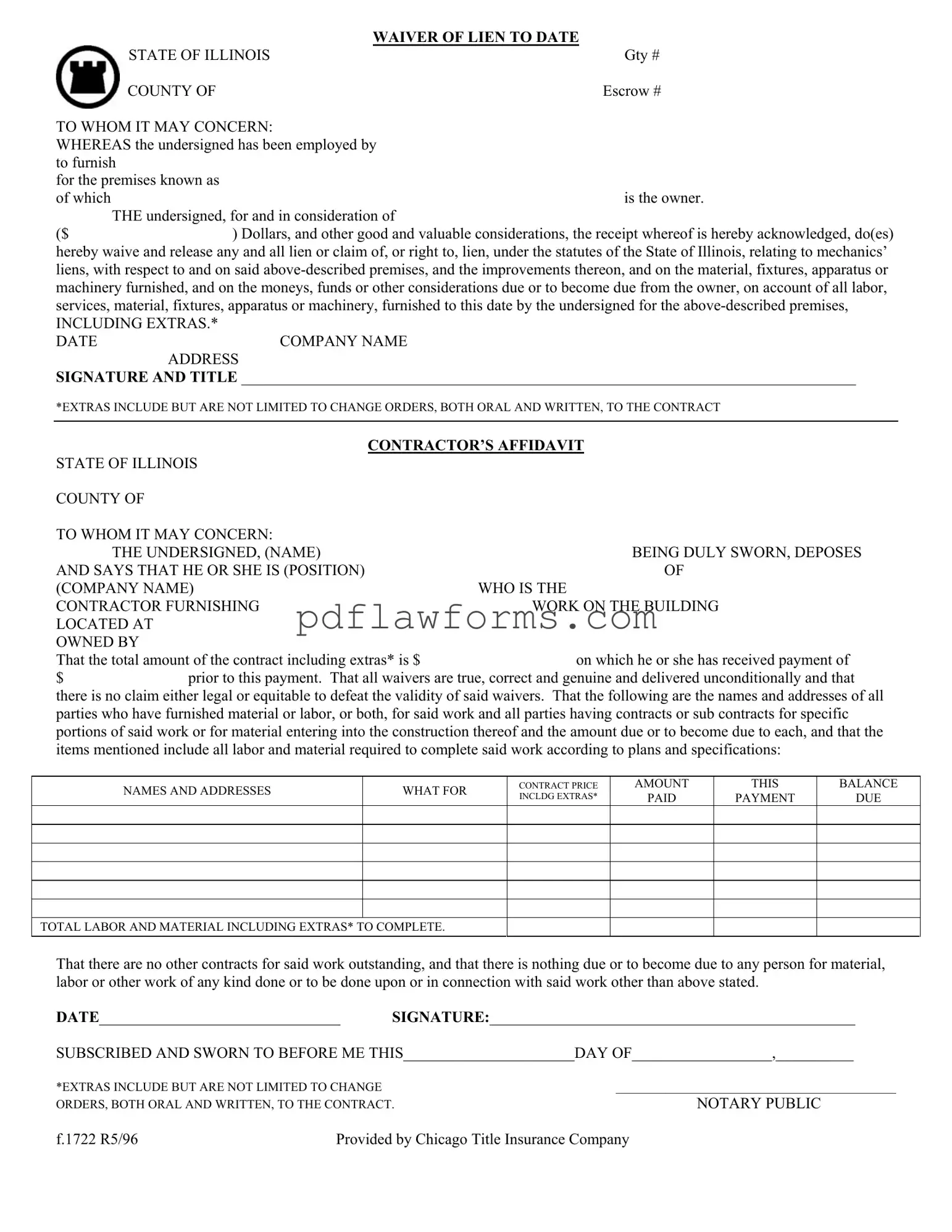Filling out the Chicago Title Waiver Format form can be a straightforward process, but several common mistakes can lead to complications. One frequent error occurs when individuals forget to include the company name at the top of the form. This omission can create confusion about who is waiving the lien and may delay processing.
Another common mistake is neglecting to specify the date clearly. The date is crucial as it establishes the timeline for the waiver. If the date is missing or illegible, it may raise questions about the validity of the waiver. Ensuring that the date is accurate and easy to read helps avoid potential disputes.
People often fail to provide the correct owner's name or the premises' address. This information must be precise to ensure that the waiver applies to the correct property. A simple typo can lead to significant issues down the line, particularly if multiple properties are involved.
Additionally, some individuals do not include the consideration amount in the designated space. This figure represents the payment received in exchange for the waiver. Without it, the waiver may be deemed incomplete, which can complicate future transactions.
Another mistake is not signing the form. While this may seem obvious, it is easy to overlook, especially when multiple parties are involved. A missing signature invalidates the waiver, and the intended legal protections are lost.
People sometimes forget to indicate their title or position on the form. This detail adds credibility and context to the waiver. Including the title helps clarify the authority of the person signing the document, which can be essential in legal matters.
In some cases, individuals may not provide a complete list of names and addresses of all parties involved in the project. This section is vital for transparency and to ensure that all parties are accounted for. Omitting information can lead to disputes about who is owed payment or who has a claim on the property.
Lastly, failing to have the form notarized can render it ineffective. Notarization serves as a verification step, confirming the identity of the signer and the authenticity of the document. Without this step, the waiver may not hold up in legal situations.
